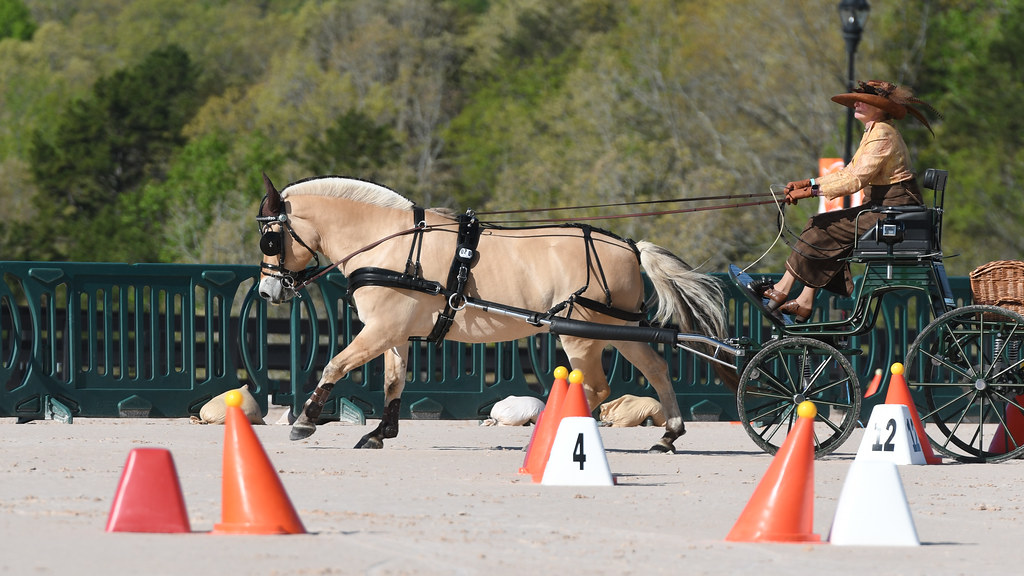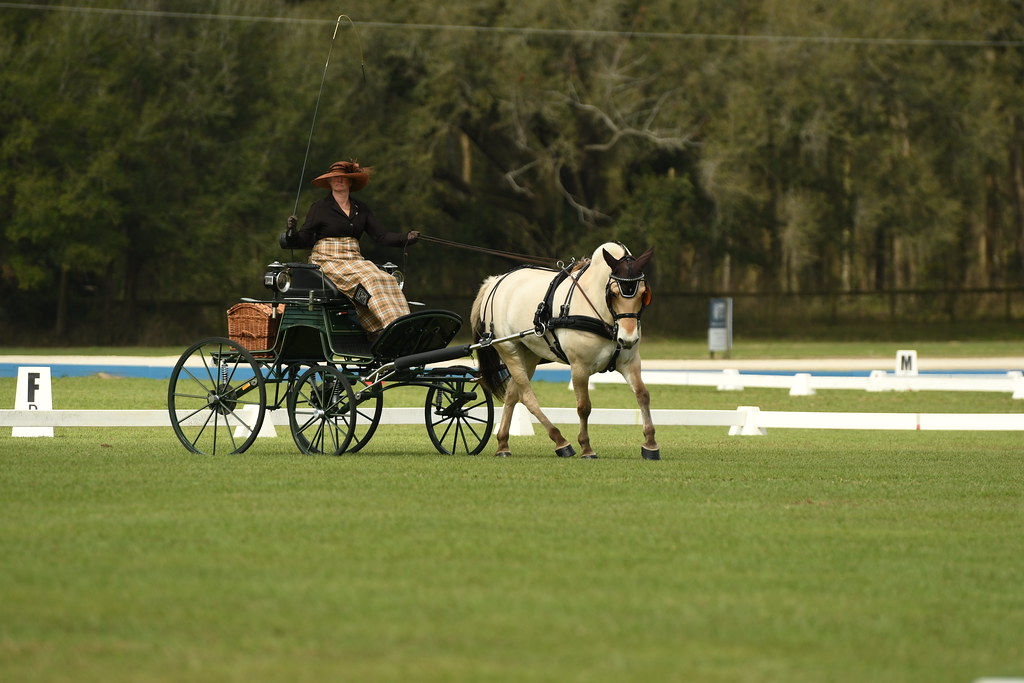This can be REALLY confusing with driving terminology. Folks use traditional (antiques, historic ways of doing things) words wrongly on more modern vehicles, CDE driving uses. To start, a Break historically, was a pleasure driving vehicle. Used for picnic outings by the well-to-do, hauling a number of people in the open air. Also considered as “mobile bleacher seats” for attending sporting events like races or polo matches, for getting a better view. Driver pulled up on the sidelines, grooms removed horses, food served, so passengers could enjoy good viewing. Breaks were pulled by multiples of horses, Pairs, Fours, to handle the human load. Never a single horse, so putting the “Break” name on that modern carriage is both incorrect and extremely confusing if a person is talking about it!
The two seat levels on the front seat, are to aid the Driver in body position while driving. The seat under Driver is called a wedge. Posture should never look as though Driver is seated at a chair, sharp bend at the hips and knees. Angles are more open. Driver is stronger pushing legs into floor or footrest, is able to lean torso back to take up rein without moving hands. This is why you do not find a seatback behind the Driver on higher end carriages, old or new. Seatback would prevent leaning back if needed. Height of wedge can be personalized to Driver height, leg length, so they are comfortable, yet still can see ahead of the equine/s. We have antique wedges that came with the carriage, more of a square box covered in matching upholstery with the angled seat. No sides. But drivers of traditional old vehicles were out for a long day at pleasure speeds, so comfort was a key factor in designs.
There is a lot of “traditional” colors in upholstery choices. You want a colored seat to blend, not be a focal point. Not so many use black because it needs constant brushing of fabric to appear clean. Fades when left in the sun very much. The various shades of tan to beige, greys, are real common because they go well with most clothing, laprobe choices. Have to say they are NOT good choices to drive down to the Dairy Queen with kids on a hot day!! Chocolate is really hard to get out of fabric! Ha ha There is no Rule about laprobe and upholstery matching.
The ADS Rulebook, Pleasure Driving section, lays out the looks wanted in historic turnouts for Judging. Each vehicle make can have specific details of harness, whip type, lamps, to make it “more of a perfect gig, runabout and so on”. May give you ideas to use in making your small vehicle. The CDE side rules may cover newer thinking. There is a amazing amount of information to be found in the Rulebook details. Useful for the modern carriage turnouts as well.
As to paint colors on modern vehicles, darker colors are popular, black, navy, some browns, various darker greens (Brewster green color is popular on traditional or antique carriages.) darker reds of maroon, burgundy. Pinstriping should contrast but not be obnoxious on modern vehicles you linked. Yellows in straw to wheat gold, blues, reds in all shades, greens, greys are common. Not much white pinstriping in CDE things. I find you need to like how your vehicle looks close up and at a distance. Gives you confidence. Try some colors before actual choices, take photos, look at photos later for a more “real appearance.” My “great color scheme” made me disappear in a parade. Horse looked great, husband looked good, but my matchy grey jacket, hat, laprobe and no touch of color, rendered me pretty much a floating face in the distance pictures!
Some folk folks paint all their carriages in “their stable colors”. Historic families did this, you knew who was going by because of the carriage paint job. I remember being quite surprised seeing a Vanderbilt coach with vermillion striping, thinking vermillion such a ODD color on that very nice coach!
Passenger seat is lower, helps keep them out of the Driver’s way going along. There usually is a seat back and rail around the front passenger seat for security. On modern competition vehicles there usually is no one beside the Driver to get bumped with an elbow during rein handling. Pleasure showing needs Driver to pay attention if they have a passenger beside them. No knocking off THE HAT! Ha ha
Lady Driver can dress quietly or add a note of color. This could be their hat, laprobe, scarf, jacket. Subtle outfit touches may be overwhelmed by distance from the Judge in a Class or doing dressage and cones. Gentlemen Drivers usually dress for the weather, look conservative in jackets above the laprobe. Nice, shaped hats, brims even. Nothing flapping like tie ends. Both genders should wear grippy shoes, leather soles can slip getting in and out, sometimes on the footrest if you brace the feet.








